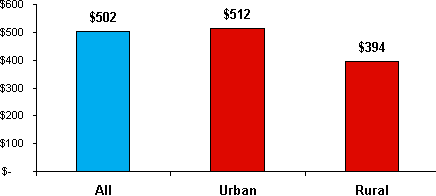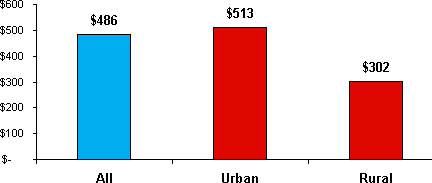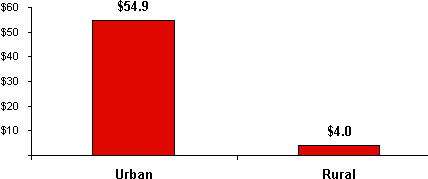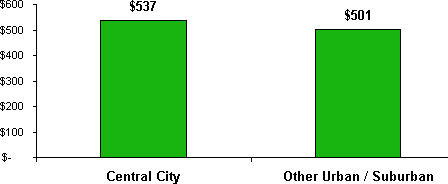IDEX Online Research: Consumer Jewelry Expenditures by Urban vs Rural - Urban Customers Buy More Jewelry
September 18, 07
Our headline reads “Urban Customers Buy More Jewelry,” but the simple fact is this: it really doesn’t matter very much where a consumer lives. Granted, rural consumers spend about 20 percent less on jewelry than consumers located in urban areas, which includes America’s rich suburbs. But rural consumers represent only about 9 percent of all U.S. households.
And, by the definition of “rural”, they are scattered across the country in low-density population areas. In other words, they are difficult to reach. We don’t want to write them off, but marketing efficiencies exist with urban consumers that simply are not available when targeting rural shoppers.
The graph below summarizes spending differences for jewelry among urban versus rural consumers in America in 2005.
| Annual Household Jewelry Expenditures |
The biggest difference between jewelry expenditures by household location in 2005 versus the prior year is that some of the disparity evaporated: the gap closed moderatedly between rural consumers and urban consumers, as the graph below illustrates.
| Annual Household Jewelry Expenditures |
Market Potential Favors Urban Consumers
Urban consumers, including consumers who live in America’s suburban areas which typically have high income levels, represent a vital market. With 91 percent of the total U.S. population, urban consumers represent 93 percent of all jewelry expenditures. The following graph shows the potential aggregate market size for jewelry expenditures by urban consumers.
| Annual Jewelry Consumption By Household Location |
Center City Shoppers Spend More on Jewelry
In contrast to data from the 2004 Consumer Expenditure Survey, consumers who live in central cities spend slightly more on jewelry than suburban consumers. We suspect that this may be a sampling anomaly. The graph below illustrates per household jewelry expenditures of consumers who live in the central city versus those who live in the suburbs.
| Annual Household Jewelry Expenditures |
Most illogical results from the Consumer Expenditure Survey can be explained from other data. Normally, income differences explain unusual results. However, in the case of jewelry spending by central city consumers versus suburban consumers, income data only adds to the confusion.
Suburban consumers make nearly 30 percent more than city center consumers. That is why we think this may be a one-year anomaly. The table below illustrates pretax household income for consumers by location.
 Source: BLS |



